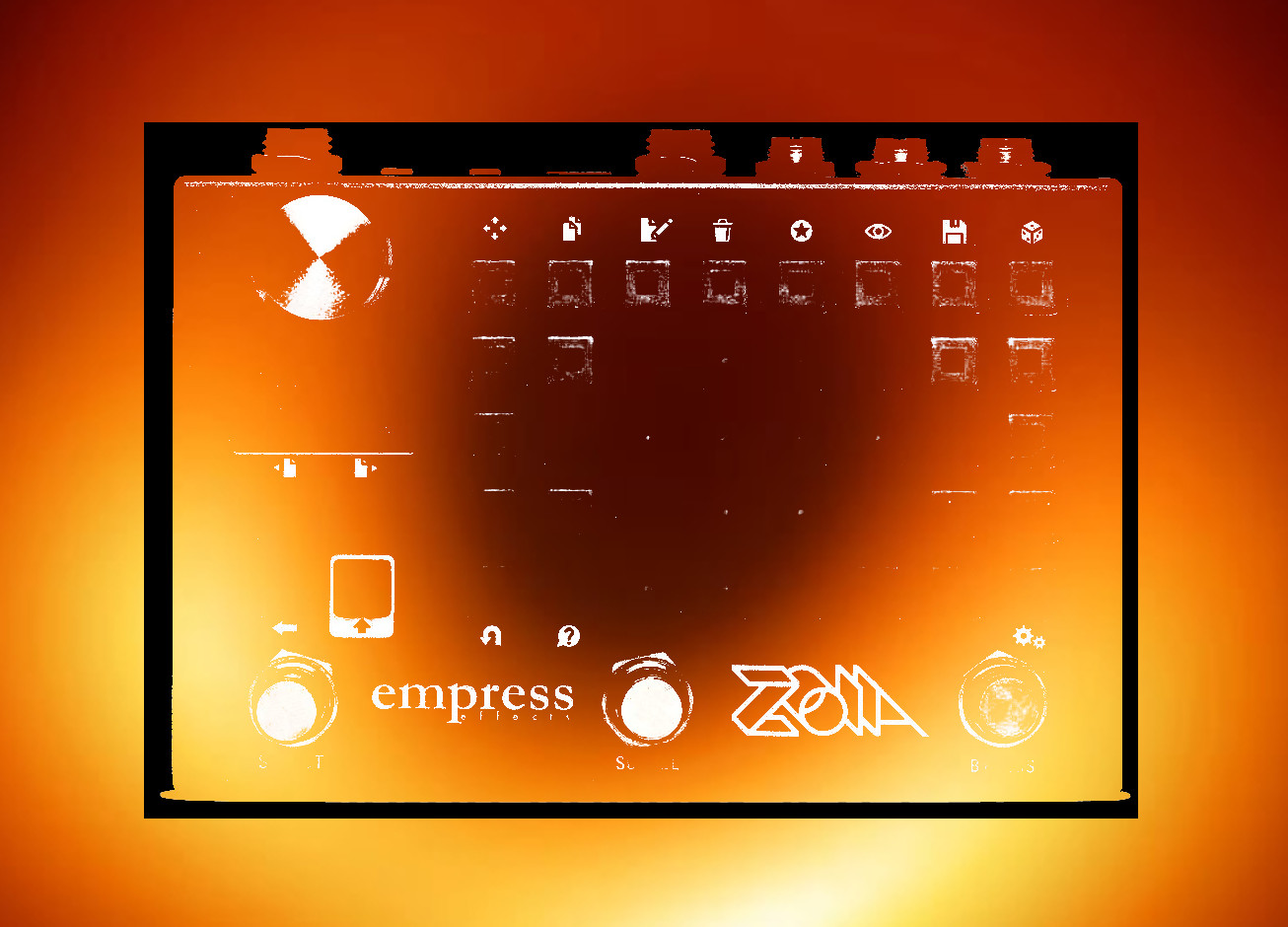I have been considering a revision of my pattern tremolo (my first patch) for a while, trying to determine how to address some of the problems I had with it. Then, a conversation with u/Utter_Flange on r/ZOIA got me to thinking about it more seriously, and then I had a bunch of ideas, and then… this…
So, pattern trem 1.1:
A four-step pattern tremolo. Determine clock division and waveshape per step, or allow both to be determined randomly. Configure the pattern from one to four steps. Freeze the sequence. Introduce a stereo panner. All the things.
I’m not going to spend a lot of time explaining a pattern tremolo; I figure if you’re reading this, you have a pretty good idea of what it is, so let’s jump into controls.
The signal path is stereo throughout.
Footswitches:
Left — tap tempo
Middle, latching — freeze/unfreeze sequencer; this allows you to stop on a certain step, play, and then reintroduce the sequencer
Right, latching — panner on/off
Front page:
Arrayed across the front page’s first four rows are identical, color-coordinated controls for each step of the pattern, beginning with:
Wave select per step — press one of the five buttons for square, sine, triangle, ramp or sawtooth on a given step
Random — randomly selects a waveform per step (note: cannot be applied when the sequencer is frozen or the pattern is limited to one step)
Swing — bipolar control to adjust waveform’s swing per step; this can be used to introduce some interesting variations in sequences using similar clock multiples and waveshapes or to change the sound/rhythm of a given step
Multiplier — this is a value control; I tried to get it to scale as well as I could such that 1/100ths were equival to multiple increements: e.g. a value of .030 = equals a 3x multiple for that step; .100 = a 10x multiple, etc. Select from 1x multiple (synced to tap) to 32x. The scaling is not perfect, but it is fairly accurate.
When the multiplier control is raised above .5, the multiplier per step will be randomly determined from values between 1x and 16x multiples (note: cannot be applied when the sequencer is frozen or the pattern is limited to one step)
Along the bottom row:
Blinky lights — shows the current rate of a given step; when the step is active, it will light up solidly and brightly
Depth (yellow square) — depth for the tremolo
Count buttons — three pushbuttons; each corresponds to length of the sequence. When the first is on, the sequence is limited to the first step, when the second is on, two steps; etc.; when none are on, the sequence runs through all four steps
Second page:
Ins and outs for the patch, along with:
The master clock and an additional clock divider for the master clock.
The clock divider for the pan control and the LFO used for the pan (if you want to change the shape of the pan, or its rate, this is the place). Default is a triangle pan using a 1/6th division.
Sound clip:
0:00-0:20 — All the waveforms are randomly selected per step. The fourth step’s multiplier is also set to random.
0:20-1:29 — Two step patterns. I begin with two relatively slow steps, then I increase the speed of one step to “cricket chirping”/pseudo ring mod rates. The waveform of the slower step is randomly selected. At about 1:05, I increase it to four steps again. Then I drop it back down to two at the end of this segment.
1:30-1:55 — Showing off the the pan. It adds a nice complexity to the affair.



I guess I didn’t explain what was different between 1.0 and 1.1:
In truth, this is a total rebuild. So about the only commonalities it shares are a four-step pattern sequencer (but this one works right) and a panner at the output stage.
This one allows:
— Waveshape select per step, or for the waveshape to be chosen randomly per step
— Random multiples per step
— The ability to change the sequence length easily and to freeze/stop the sequence on a given step
— Control of all essential features from one page
— A much more accessible (I hope?) UI